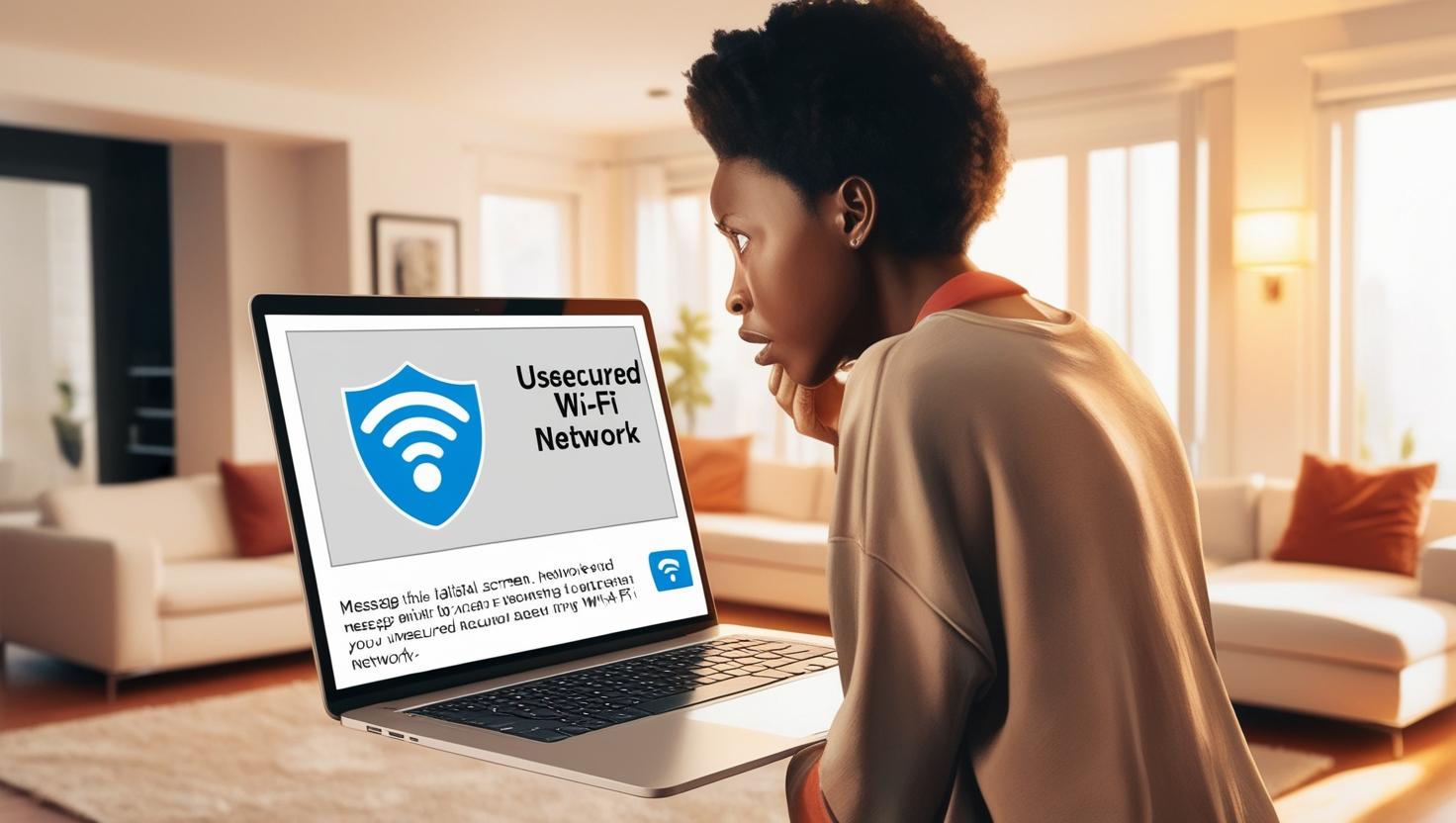
We live in a world where filters and curated feeds are the norm. We wear makeup, apply digital filters, and post carefully selected moments to shape how others perceive us. We hide our messy kitchens, our tired eyes, our real lives—and somehow, people still seem to know more than we’ve ever shared.
How?
Well, while we’ve been investing in bulletproof doors, motion-activated lights, and ballistic-resistant hinges, we’ve forgotten something important—the backdoor. That unguarded, invisible door is your home Wi-Fi network, and it’s connected to everything: your phone, your laptop, your baby monitor, your doorbell camera… even your oven.
We’ve built fortresses in the physical world and left our digital front completely open.
Here’s how to lock that backdoor, keep digital intruders out, and make sure your smart home isn’t smarter than your security.
1. Change Your Default Router Username and Password
When you first get your router, it usually comes with a default admin login—something like admin/admin or admin/password. These default credentials are public knowledge. A simple Google search can expose them, and hackers know it.
What to do:
- Log into your router’s dashboard (usually by typing 192.168.1.1 or 192.168.0.1 into your browser).
- Change both the admin username and password to something strong and unique.
Pro Tip: This isn’t your Wi-Fi password. This is the key to your router’s brain. Think of it like the master key to your entire digital home.
2. Use a Strong Wi-Fi Password (and a Smart Network Name)
Leaving your Wi-Fi open—or protected by something like “12345678”—is like leaving your front door wide open with a sign that says “Snacks inside.”
And let’s talk about network names (SSIDs) for a second. They’re visible to everyone around you. While naming your Wi-Fi “FBI Surveillance Van” might earn you a chuckle, it might also earn you a visit from the neighbors… or worse.
🛫 True story: An American Airlines flight was delayed, and passengers were rescreened—all because someone had a hotspot named with the word “bomb” in it. Yep. Just the Wi-Fi name.
What to do:
- Choose a non-identifiable SSID (avoid using names, addresses, or your router’s brand).
- Set a strong Wi-Fi password—12+ characters with a mix of letters, numbers, and symbols.
- And yes, definitely avoid naming your network something that could trigger an airport evacuation.
3. Enable WPA3 (or at least WPA2) Encryption
Encryption keeps your data safe while it travels across the airwaves. If your router is still using WEP, you might as well be sending out invitations to cybercriminals.
What to do:
- Log in to your router settings.
- Under security options, make sure WPA3 is selected (or WPA2 if WPA3 isn’t available).
- Avoid WEP at all costs—it’s outdated and easily cracked.
Think of encryption like a secure envelope for your internet traffic. WPA3 is the heavy-duty one with tamper-proof seals.
4. Disable WPS and Remote Management
WPS (Wi-Fi Protected Setup):
Meant to simplify device connections, but it can be exploited to gain unauthorized access.
Remote Management:
This allows someone to access your router’s settings from anywhere—not just your living room. Great for IT pros, bad for average users.
What to do:
- Go to your router’s advanced settings.
- Turn off WPS and disable remote management (sometimes called “Remote Access”).
If you don’t need it—and most people don’t—turn it off. Less is more when it comes to attack surfaces.
5. Keep Your Router’s Firmware Updated
Your router runs on software—firmware—and just like your phone or laptop, updates are needed to stay secure. Outdated firmware can leave doors wide open for attackers.
What to do:
- Log in to your router settings.
- Look for a “Firmware Update” or “Software Update” section.
- Enable automatic updates, if available.
Updating your firmware is like patching holes in the digital walls of your home.
6. Create a Guest Network for Visitors
Giving guests access to your main network is like handing them keys to every room in your house, including your office, your safe, and your diary.
What to do:
- Set up a guest Wi-Fi network with a different password.
- Restrict access to shared files and devices.
- Bonus points if you give it a fun name—like “ThisIsNotFreeWiFi” or “CaffeinatedGuestsOnly.”
This way, your guests can browse the internet without browsing through your digital life.
7. Monitor Who’s Connected
Ever feel like your Wi-Fi is sluggish for no reason? You might have uninvited guests (digital freeloaders) using your bandwidth—or worse, snooping.
What to do:
- Log into your router dashboard.
- Look for a list of connected devices.
- If you see anything unfamiliar—disconnect it and change your Wi-Fi password.
It’s your network. You deserve to know who’s crashing the party.
8. Hide Your SSID (Optional, But Sneaky)
Want to fly under the radar? You can hide your network name, so it won’t show up in the list of available Wi-Fi networks.
What to do:
- In your router settings, toggle the “Hide SSID” or “Disable SSID Broadcast” option.
You’ll have to manually enter the network name on each device, but it adds an extra layer of stealth. (And who doesn’t want to feel like a secret agent?)
Bonus Tip: Rename Your Router’s Device Name
Many routers broadcast their brand name and model by default. This gives hackers clues about potential vulnerabilities.
What to do:
- Rename your device to something generic and unidentifiable in your router’s settings.
Let them guess. Don’t make it easy.
Conclusion: Lock the Digital Doors Behind You
We’ve spent a lot of time securing our homes physically—deadbolts, cameras, alarms. But in the digital age, your Wi-Fi network is just as critical. It connects everything. It is the house.
So why leave it open?
By changing default credentials, using strong passwords, enabling encryption, updating your firmware, and creating guest networks, you protect not just your internet—but your entire digital lifestyle.
When was the last time you checked your Wi-Fi settings? Got a funny or frightening story from a badly secured network? Share it in the comments—we’re all learning here!
#CyberSecurity #WiFiSecurity #HomeNetwork #OnlineSafety #TechTips #StaySafe #DigitalDefense
